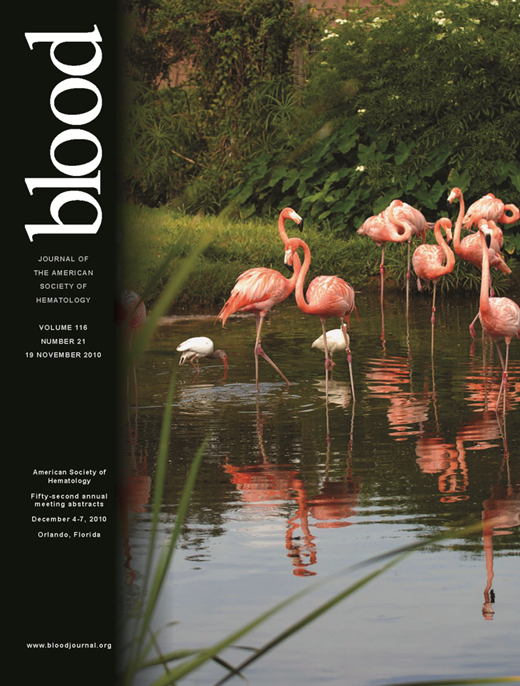Abstract
Abstract 3304
Although significant progress has been made in the treatment of leukemia, relapse continues to be a major problem, particularly in acute myeloid leukemia (AML). The prognosis for relapsed leukemia is poor, indicating an area for potential improvements. However, animal models to study the response of human AML to chemotherapeutics and subsequent relapse are lacking. Recently we developed an improved NOD/SCID mouse with IL2RG knockout and transgenic expression of myelo-supportive cytokines SCF, GM-CSF, and IL-3 (the NSGS mouse). This mouse is remarkable in its ability to accept human AML grafts more efficiently than all other available strains. When coupled with in vitro derived AML cells, the NSGS mouse allows for a more predictable AML model with shorter latency and smaller range of death than in other mouse strains, including NSG mice. Importantly, very low numbers of cells reliably generate fatal AML in roughly 40 days, even in non-irradiated NSGS mice, allowing for rapid experimental conclusions and reduced toxicity. With the benefits of these unique tools, we sought to develop a model system to evaluate the efficacy of chemotherapeutic agents on human AML cells in vivo. Engrafted mice received a chemotherapy regimen over a 5-day treatment period consisting of a daily dose of cytarabine with simultaneous injection of doxorubicin during the first three days. Treated mice experienced striking weight loss during the treatment period with a nadir at days 8–10 post-treatment. Mice recovered body weight within 3 weeks. Serial complete blood counts indicated a rapid transient drop in total white blood cell and neutrophil counts and a delayed transient drop in red blood cell and platelet numbers, reminiscent of the effects observed in patients undergoing chemotherapy. The drugs successfully targeted the cells of the bone marrow, as evidenced by a profound loss of cellularity in treated mice relative to controls. When mice harboring N-Ras(G12D) positive AML cells were treated at early time points post-transplant, a significant reduction of tumor burden was observed in the BM and PB, with the grafts of treated mice essentially undetectable for weeks after treatment cessation. Nevertheless, treated mice inevitably succumbed to disease, although with a significantly prolonged latency compared to mock treated mice. However, when AML cells containing the FLT3-ITD mutation were used, a shift in disease latency was not reproducibly seen. This data correlates well with patient data showing that FLT3-ITD mutant AML has a worse prognosis than AML samples with N-Ras mutations. Importantly, the reappearance of AML within weeks of treatment affords the opportunity to model drug resistance and relapse, as well as the potential synergistic effects of experimental compounds used in combination with traditional chemotherapy. Additionally, the period following treatment may allow for studies of minimal residual disease as well as the testing of potential maintenance therapies. Finally, this approach permits a detailed analysis of the critical few cancer stem cells that remain after induction therapy with the goal of identifying novel compounds capable of targeting these cells.
No relevant conflicts of interest to declare.
Author notes
Asterisk with author names denotes non-ASH members.

